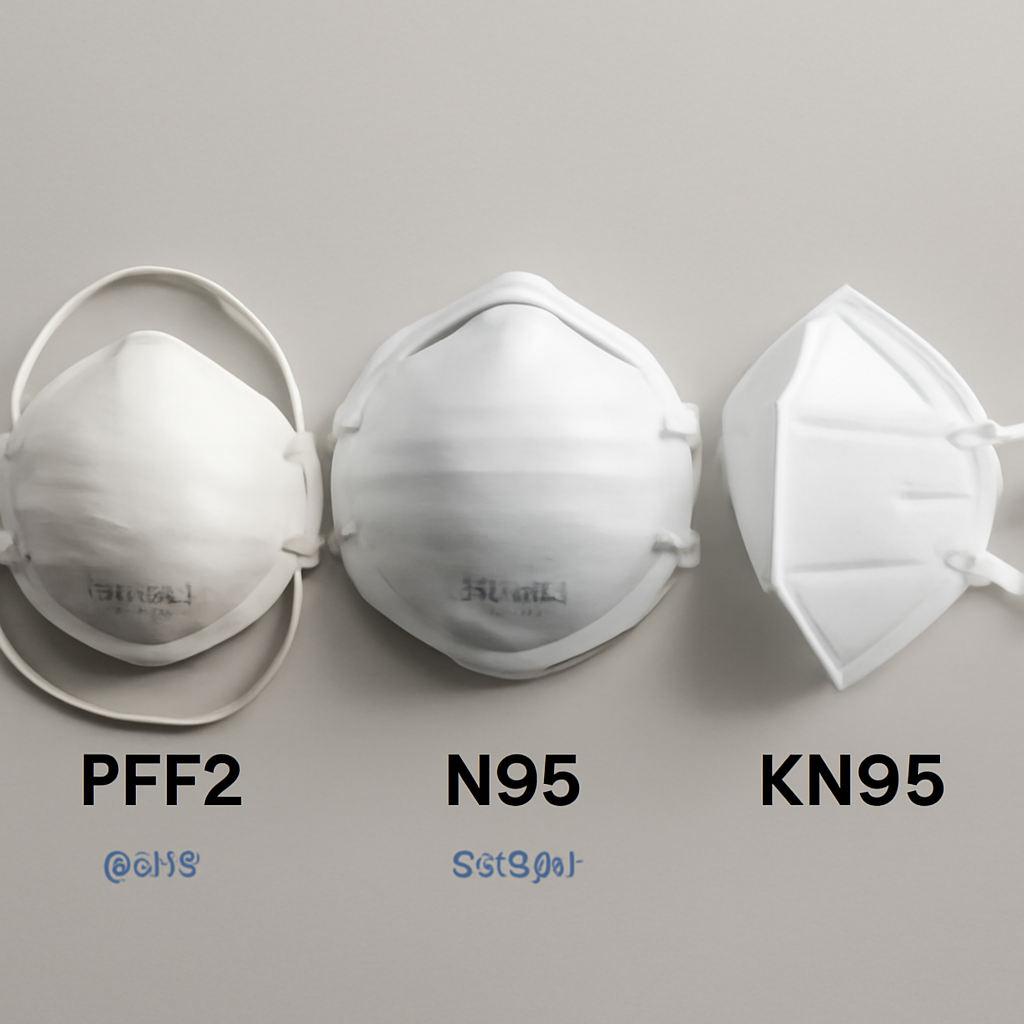
Comparison Between PFF2, KN95, N95 and Other Filtering Facepiece Respirators
Filtering facepiece respirators (FFRs), often called disposable respirators, are subject to various regulations or Standards worldwide.
These Standards specify certain physical properties and performance characteristics required for respirators to claim compliance with a specific Standard.
During pandemic or emergency situations, health authorities often reference these Standards when making respirator recommendations, stating, for example, that certain groups of people should wear an “N95, PFF2 or equivalent” respirator.
This document is intended only to help clarify some important similarities between these references, specifically for the following FFR performance Standards:
- N95 (NIOSH-42CFR84 – United States)
- FFP2 (EN 149-2001 – Europe)
- KN95 (GB2626-2006- China)
- P2 (AS/NZA 1716:2012 – Australia/New Zealand)
- Korea 1st class (KMOEL-2017-64 – Korea)
- DS (JMHLW-Notification 214, 2018 – Japan)
- PFF2 (ABNT/NBR 13.698-2011 – Brazil)
As shown in the following table, certified respirators that meet these Standards are expected to perform very similarly to each other, based on the performance requirements established in the Standards and confirmed during compliance testing.
An important point of comparison is the flow rates specified by these Standards for inhalation and exhalation resistance tests. Inhalation resistance tests range from 40 to 160L/min.
Exhalation resistance tests range from 30 to 95 l/min. Some countries require testing to be performed at various flow rates, others only at maximum or minimum values within these ranges. While this may seem to indicate that the Standards’ requirements for breathing resistance (also called “pressure drop”) differ from each other, it’s important to understand that pressure drop in any filter will naturally be higher at a higher flow rate and lower at a lower flow rate.
Given typical pressure curves for respirator filters, the pressure drop requirements of various Standards are actually quite similar.
 This chart shows a typical filter pressure drop curve. If a filter is tested at high flow, the pressure drop performance will be relatively high. If the same filter is tested at low flow, the pressure drop performance will be relatively low.
This chart shows a typical filter pressure drop curve. If a filter is tested at high flow, the pressure drop performance will be relatively high. If the same filter is tested at low flow, the pressure drop performance will be relatively low.
Based on this comparison, it’s reasonable to consider China’s KN95, Australia’s AS/NZ P2, Korea’s 1st Class, Japan’s DS, and Brazil’s PFF2 FFRs as “Equivalent” to US NIOSH N95 and European FFP2 respirators for filtering non-oily particles, such as those resulting from wildfires, PM 2.5 air pollution, volcanic eruptions, or bioaerosols (e.g., viruses).
However, before selecting a respirator, users should consult their local respiratory protection regulations and requirements or check with local public health authorities for selection guidance. In Brazil, check the Respiratory Protection Program from Fundacentro and the Respiratory Protection Guide Against Biological Agents for Healthcare Workers from ANVISA.


Definitions
Filter Performance – the filter is evaluated to measure the reduction in concentrations of specific aerosols in air passing through the filter.
Test Agent – the aerosol generated during filter performance testing.
Total Inward Leakage (TIL) – the amount of a specific aerosol that enters the respirator facepiece tested through penetration and face seal leakage, while a user performs a series of exercises in a test chamber.
Inward Leakage (IL) – the amount of a specific aerosol that enters the respirator facepiece tested, while a user performs normal breathing for 3 minutes in a test chamber. The test aerosol size (diameter measured in count) is about 0.5 micrometers.
Pressure Drop – the resistance that air undergoes as it moves through a medium, such as a respirator filter.
Check out: Coronavirus: 10 good news about the pandemic, one year later
SOURCE: 3M – Personal Safety Division – 3M Brazil
🕵️ The Final Mystery: All Roads Lead to Protection
And so we reach the end of this journey through the secret codes of protective masks. Like in a good mystery novel, we discovered that behind all these enigmatic acronyms – PFF2, N95, KN95, FFP2 – lies a surprisingly simple truth: they are all faces of the same protective coin.
The real secret wasn’t in the differences between them, but in the revelation that, regardless of country of origin or standard followed, they all share the same fundamental purpose. Like detectives solving a case, we discovered that the right choice doesn’t depend on the mysterious acronym, but on legitimate certification and proper use.
Now that you know the secrets behind these codes, you can confidently walk through pharmacy aisles, knowing that the mystery has finally been solved. True protection was always within your reach – you just needed to know where to look.



0 Comentários